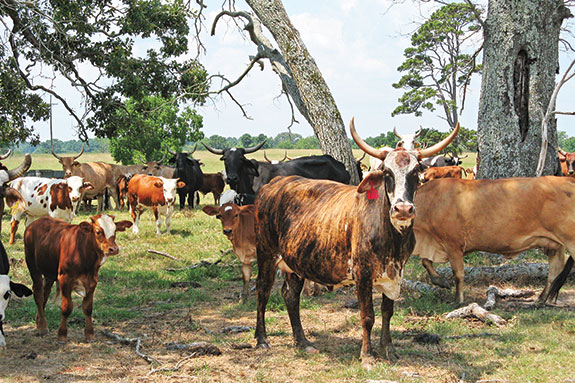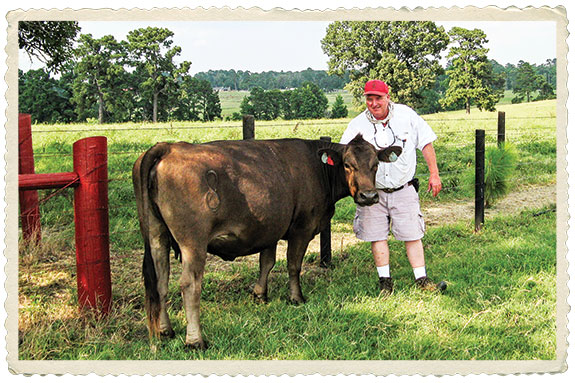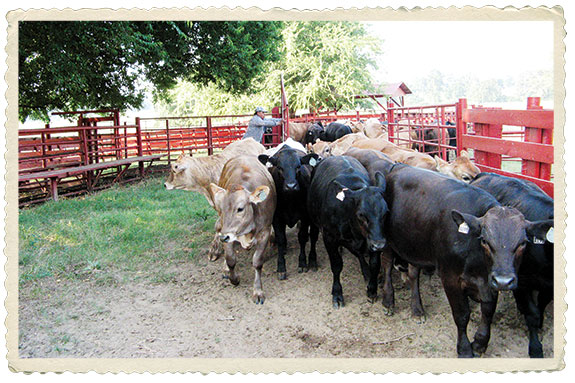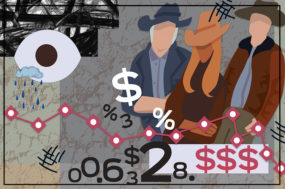The four ecoregions provide east Texas with a variety of topography, soils, vegetation and climate.
Piney Woods topography is gently rolling to hilly forested land and is part of a much larger region of pine-hardwood forest that extends into Louisiana, Arkansas and Oklahoma.
Humidity and temperatures are typically high, and the area is comparatively free from persistent winds. Soils are mostly pale to dark-gray sands or sandy loams.
The Piney Woods ecoregion is commonly called deep east Texas and considered to be the westernmost extension of the Deep South.
There is a predominant Deep South cultural influence with customs and traditions passed down from Anglo and African Southerners who settled there during the mid-19th century and late 19th century.
Gulf Coast Prairies are on the southern end of east Texas. The region is a nearly level, slowly drained plain less than 150 feet in elevation.
Soils are sands, sandy loams and clays. Vegetation is primarily grasses with extensive oak mottes and salt marshes. The growing season is usually more than 300 days, with high humidity and warm temperatures.
Post Oak Savannah and Blackland Prairies ecoregions are intertwined along the western side of east Texas.
Although many areas have been planted to improved grasses such as coastal bermuda, native grasses including bluestems, brownseed paspalum, indiangrass, switchgrass, gramas, tall dropseed and Texas wintergrass also occur.
Some of the woody plant species are post oak, blackjack oak, water oak, winged elm, hackberry and yaupon. Topography is gently rolling to nearly level with soils varying from dark-colored alkaline clays to gray acid sandy loams.
Generally, east Texas is not considered cow country in comparison to the western, northern and southern areas of Texas.
A yearly normal rainfall average of 35 to 60 inches gives east Texas a moist climate which promotes good grazing habitat.
The east Texas economy is supported by cattle, timber, minerals, industry and tourism, with poultry as an important contributor. Cattle ranches vary in size and types of operations, and many have been owned and operated by five and six generations of family.
Blacksher Ranch
“James Franklin Blacksher bought land in east Texas near Nacogdoches in 1845,” says Clay Blacksher, sixth-generation grandson.
“My daughters, 9-year-old Rylee and 6-year-old Caly, will be seventh-generation Blacksher family to own the land. Rylee is already showing an interest in cattle.
“She raised a Santa Gertrudis heifer and showed it in several livestock shows, wining ribbons for her efforts. Caly also has a good understanding of our ranch and what is involved in its day-to-day operation.”
The original 320 acres were reduced to approximately 200 acres as the property transferred from one generation to the next. Clay and his father, Anthony, have a goal of re-purchasing the missing acreage.
“East Texas went through the 2011 drought like every other area of Texas,” Blacksher states. “Fortunately, we were able to connect to city water which allowed us to keep our cattle from dying of thirst.
“We attempt to build drought tolerance into our herds with Brahman influence. Our commercial cattle are mostly black baldies, Angus-Brahman crosses with a small amount of Hereford genetics. Our small registered herd is Santa Gertrudis.
“My dad and I work hard to keep the ranch profitable,” continues Blacksher. “As a loan officer for the Farm Service Agency, I see what works and what doesn’t work on other ranches. I try to incorporate the best practices into our operation.”
Due to rigorous culling and the use of good bulls, the Blacksher herds have a 90 to 95 percent calving rate.
“We not only cull cows that don’t produce calves, but we also sell any animal that shows even a slight tendency to have a bad temperament.
“I don’t want wild or ill-tempered cattle around my girls. We move our cattle quietly with all-terrain vehicles (ATVs), and we use low-stress handling techniques when working them.”
The Blackshers raise their own hay. Tifton 85 is planted in the hay meadows, and their pastures contain common bermudagrass, bahiagrass and crimson clover.
Small areas were sprigged with jiggs this year to evaluate it as a hay crop. Pastures and hay meadows are sprayed annually with herbicide that contains a formulated mixture of dicamba and 2,4-D amine. The Blackshers use this herbicide because they found that it doesn’t kill crimson clover.
Chicken litter is used for pasture and hay meadow fertilization. Since their soils are low in phosphorus, they don’t have to worry about the amount added in chicken litter. The soils are also low in copper, and this problem is remedied by feeding a complete granular mineral mix free-choice.
When we visited the Blackshers during the first week of July, their pastures were lush and green. The family was beginning to get nervous, however, because they had not had any rain for three weeks, and that is unusual for East Texas.

LR Cattle Company
Chance and Julie David and 4-year-old daughter, Lucinda, live on a ranch near Joaquin, Texas, close to the Texas-Louisiana state line.
The Davids are relaxed Southern-mannered people that possess good skills and instincts for buying and selling cattle.
Their home is a beautiful, unusual product of their unique skills and thorough planning.
Any decorating magazine would be anxious to feature their imaginative but very comfortable home.
Julie David is an only child and the fifth generation of her family to raise cattle. The first ancestors were more farmers than ranchers, but that changed through the years.
The Davids have purchased additional land to operate with the original Dickerson ranch which Julie inherited from her family. They lease pasture as it becomes available.
Chance David is from Louisiana, and his ancestors were originally farmers but started ranching in the early 1930s.
The Davids have cattle on both sides of the Texas-Louisiana line. They love what they do, and they are good at it. Lucinda will probably carry forward the ranching tradition when she becomes older. As we rode through the David pastures, she identified the breed of each cow for us.
Julie and Chance do most of the work required for management and operation of their ranching enterprises. During roundups and other manpower-intensive activities, they often swap labor with friends and neighbors.
Chance likes to use horses and cow dogs, which he raises, to gather and work cattle. Dogs and horses allow him to move cattle quietly out of the brush in pine forests and river bottoms.
Although he is good with a horse and rope, Chance practices low-stress cattle handling to avoid weight loss, adverse effects on production and possible injuries to livestock and people.
The David ranching enterprises include stockers and cow-calf herds. They buy stocker calves from other producers and also produce their own.
The calves are preconditioned and put on pasture for weight gain. Approximately 150 heifers from their cow-calf herds are kept as herd replacements.
“We want cattle that are feed efficient and produce a profit,” David says. “We feed very little supplement and rely on good pastures to provide the required animal nutrition during most of the year.
“In the winter, when the grass is low in protein, we supplement with a small amount of commodity feeds such as cottonseed hulls plus some hay that we buy from our neighbors.
“If a cow does not produce a calf every year, we sell her when the market price is high enough to give us a profit,” David continues. “Because of our culling practices and breeding programs, we have a 95 percent calving rate.”
Like the Blackshers, the Davids were experiencing their third week without rain, and weather forecasts indicated that East Texas may be slipping back into drought.
Since drought has become more of a norm in Texas than an occasional event, Chance and Julie are breeding drought resistance into their cow-calf herds.
Chance purchased an African Watusi bull at a Florida auction and is breeding it to Brahman cows. He is also crossbreeding Texas Longhorns and Brahmans.
“I feel that both the Watusi and Longhorn complement the qualities of the Brahman,” says David. “The crosses exhibit improved heat tolerance and are good browsers.
“They can live and produce on what is in the pasture, regardless of whether it’s grass, weeds or brush. These cattle don’t require as much water as our other cattle. They are excellent cattle for drought areas.”
Chance is an excellent business manager and operates from a business plan that is updated annually or as needed. He tracks and manages cash flow very closely. The David Cattle Company is successful because of Chance’s business skills.

Winston 8 Ranch
Simon Winston is a seventh-generation East Texas cattle producer and manages the family ranching business near Lufkin.
The ranch is a cow-calf operation with approximately 200 mother cows.
“My primary goal is to sell premium-quality beef at the top price,” Winston says.
“If I eat a steak in a restaurant, I want it to be tender with a good wholesome flavor.
“That is exactly the way I want the beef from my ranch to taste. We contract with a feedlot to finish our calves and then we sell them on the rail to processors.”
One of the qualities for which Winston breeds is full, beefy hindquarters. He obtains this trait by crossing Brahman with Braunvieh or Angus.
He uses Angus to give his cattle a black color which helps qualify them for premium pricing. Winston artificially inseminates (A.I.s) heifers with semen from low birthweight bulls.
The heifers are pregnancy tested by palpation 45 days after the bull is removed, and all open animals are culled. Winston maintains a 95 or more percent caving rate in all of his cattle.
Calves are born in the fall, and at birth they are identified with an eartag using the International Numbering system. The calves are penned three times before they are shipped to the feedlot in mid-July.
They are vaccinated for respiratory and pasteurella diseases each time they are penned. They are first penned at 2 to 3 months old, given the first vaccinations and dehorned if necessary.
Bull calves are castrated at this time. The second round of vaccinations is usually given in April, 30 days before calves are weaned.
At weaning in May, calves are given their third and final round of vaccinations. They receive a second eartag that contains an insecticide to help control flies. Each time calves are penned, their weights are recorded so gains can be tracked.

Winston’s working pens are designed for low-stress handling of cattle.
Pens and equipment are kept in excellent condition to lower the risk of people or livestock getting injured.
His hydraulic squeeze chute has louvered sides which help keep cattle calm.
For penning cattle, he hires men who ride their own horses and will move the animals quietly.
The Winston pastures are planted to mixtures of coastal bermuda and bahiagrass. The grass was approximately a foot high when we visited in July. Winston said, “I prefer to leave the gates open where the cattle can rotate themselves through the pastures.”
F.E. Hill Ranch Company
John Hill is a sixth-generation rancher, and as superintendant of the F.E. Hill Ranch, oversees 20,000 acres. F.E. Hill and F.E. Hill Ranch companies collectively include minerals, farming and hunting in addition to several cattle enterprises.
The companies are corporations with John, his father, two brothers and an aunt as directors. The board of directors meets once a month to review past activities, plan for the coming month and deal with any issues that might have arisen. Each board member has specific duties within the companies.
The ranch is located on the western edge of east Texas and borders the Trinity River. It is divided into four divisions, each managed by a division manager.
Ranch enterprises include cow-calf herds, replacement heifers and bulls raised for sale. Hill and his crew gather and move cattle with horses using low-stress handling methods. In addition to the cattle enterprises, John is responsible for the hunting programs.
“We maintain closed herds,” Hill explains. “Approximately 350 replacement heifers are retained each year, and we raise our own herd bulls. New genetics are brought into the herds by artificially inseminating our best cows.
“Our cattle are about 85 percent Angus with a small amount of Brahman and Charolais genetics,” Hill continues. “We use Angus for their black color and beef qualities; Brahman for insect, disease and heat resistance; and Charolais for their ability to put more meat on the carcass.”
Hill’s feeder calves are sold in truckload lots through Superior Livestock Auction Company. Prior to sale, calves are preconditioned using the Superior Vac 45 program. At weaning, both the cow and calf are weighed.
“We don’t keep a cow that doesn’t wean a calf weighing 50 to 55 percent of her bodyweight,” states Hill. “If the calf weighs less than 50 percent of its dam’s bodyweight, the cow has been feeding herself instead of her calf.
“This probably means that the cow isn’t producing enough milk. We keep production and financial records on each animal we own, so we know which ones are making us money and which ones aren’t. Any animal that isn’t making a profit goes to the auction sale.”
The Hill Ranch designed its own bull test that determines how well an animal will perform on pasture. This is the 19th year that they have conducted the 200-day test.
After weaning, the bulls are placed in coastal bermuda traps and fed cottonseed hulls. For the next feeding period, the calves are turned into bigger pastures with plenty of grass.
During this period, they do not receive supplemental feed. The bulls are fed protein cubes while on grass pasture in the final feeding period.
Bulls on test are weighed between each feeding period, and the weights are shared with buyers.
“Our bulls have a good reputation of performing well on native pasture, and we feel that our bull test helps us select reliable animals to sell to our customers,” says Hill.
All of the Hill cattle are on pastures of good-quality coastal bermudagrass. Chicken litter is used for fertilizer, and soil tests are conducted each year to ensure soil nutrients are in balance.
Weeds are controlled with herbicides. The Hills don’t use formal rotational grazing systems, but they do hold pastures in reserve for use when other pastures need rest. Stocking rates are very conservative.
Four ranches were visited across the center part of east Texas from the Louisiana border to the Trinity River. Although the ranches differ in size and types of beef cattle enterprises, they are all operated by sixth-generation and seventh-generation family.
Other commonalities include detailed record-keeping with a close eye on the bottom line, use of Brahman influence to produce environmentally adapted cattle, good land stewardship and a love for family and the cattle business. Yes. East Texas is cattle country with a deep heritage. ![]()
Robert and Janelle Fears are freelance writers based in Texas.
PHOTOS
TOP: Cow from a Watusi bull in the forefront belonging to the Davids.
MIDDLE: Simon Winston demonstrating the gentleness of his cattle.
BOTTOM: Winston calves are penned the last time before they are shipped to a feedlot. Photos by Robert Fears







